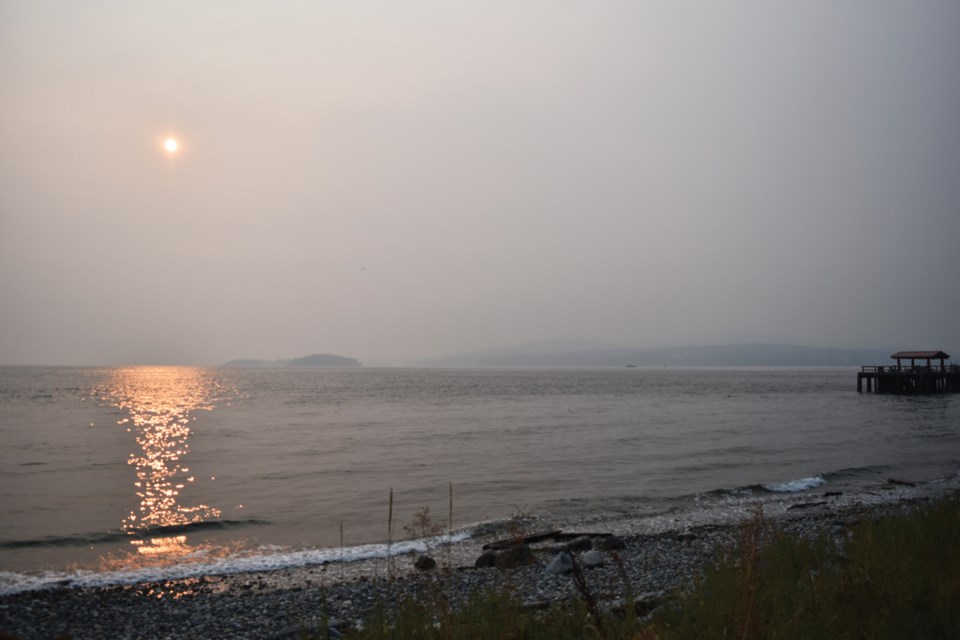Wildfires across B.C. have triggered a string of air quality advisories, including on the Sunshine Coast, where a smoky skies bulletin issued by Environment Canada was updated Tuesday. Metro Vancouver also released a separate advisory that includes the Howe Sound region.
The Sunshine Coast Tuesday had an Air Quality Health Index of 8 (high).
Fine particulate matter is measured at a station at Gibsons Municipal Hall and as of Aug. 14, the amount exceeded the Provincial Air Quality Objective, or limit of acceptable presence of contaminants in the atmosphere. Fine particulate matter refers to airborne solid or liquid particles that have a diameter of 2.5 micrometres or less. Because of their small size, they can easily penetrate indoors.
Smoke from wildfires in the central and northwest part of the province, specifically in the Bulkley Valley region west of Prince George is being blamed for the poor air quality, said Tarek Ayache, air quality meteorologist with the Ministry of Environment and Climate Change Strategy.
Weather patterns have been exacerbating the problem. “It just happened for the past couple of days the winds were blowing mostly from the northeast, blowing towards the southwest, so those winds carried all the smoke from those fires all the way towards the southwest part of the province, including the Sunshine Coast and the Island to this point,” said Ayache.
Relief, however, could be in sight. A different weather system is expected to move into the Sunshine Coast between Aug. 15 and 16, which will bring with it a change in wind direction. Ayache said the wind will likely be blowing more from the west. “If that happens, that will help clear the smoke at least for the Coast and the Island,” he said, since most fires are in the north and northeast parts of the province.
While air quality advisories are in effect, Metro Vancouver advises people to stay in cool, air-conditioned environments and reduce indoor sources of pollution such as smoking and vacuuming. Appropriately sized air cleaners, such as HEPA filters, can also be used in homes to reduce indoor pollution. People should also consider taking shelter in large air-conditioned buildings, since they have larger indoor volumes of air. Roads with heavy vehicle traffic and areas with wood smoke should also be avoided. People are advised to stay cool and drink lots of water.
Updates are available at both bcairquality.ca and on the Environment Canada’s website.



